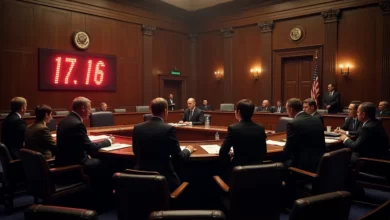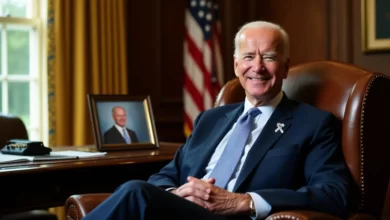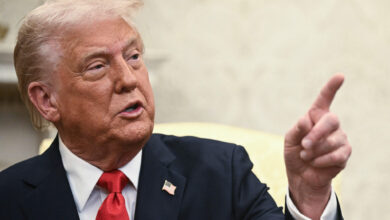Putin Mocks Trump Ukraine Peace Claims, Tensions Rise
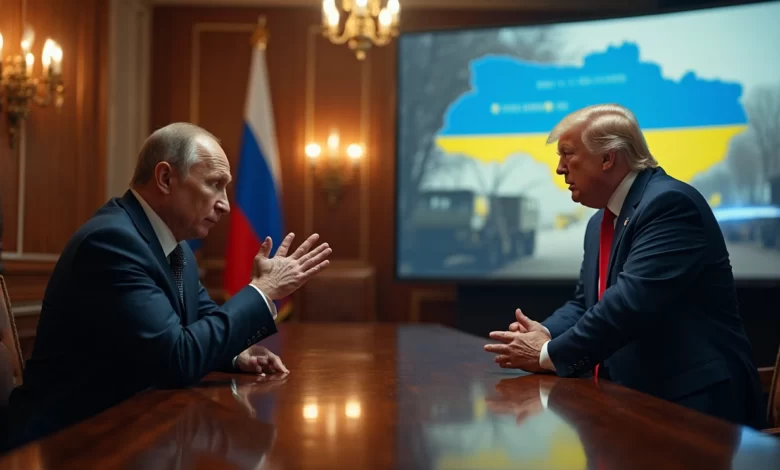
Putin and Trump had a rare two-hour phone call on March 18 that turned into a tense diplomatic exchange about peace prospects in Ukraine. They talked about exchanging 175 prisoners from each side, plus 23 badly wounded Ukrainian soldiers. Trump sounded optimistic about “immediate” ceasefire talks, but the situation on the ground tells a completely different story.
Putin’s actions speak louder than words. The Ukrainian Air Force reported Russia’s largest aerial assault of the war. Russian forces launched 355 drones and nine cruise missiles at dozens of Ukrainian cities, killing at least 12 people. The area around Putin Bay has grown more unstable, despite Trump’s bold claim that he could end the Ukraine War in “24 hours.”
The situation remains critical for everyone. Russia wants complete control of four provinces it invaded – Donetsk, Luhansk, Kherson, and Zaporizhia. They also demand Ukraine’s complete demilitarization. Ukraine’s position is completely different – they’re fighting to take back all their territory and get NATO security guarantees. No meaningful peace talks have happened since the war’s first two months. The Kremlin demands Ukraine stop receiving foreign military aid before they’ll even consider any peace deal.
Putin Mocks Trump’s Peace Plan in Public Remarks
Russian President Vladimir Putin openly mocked former President Donald Trump’s claims about negotiating peace in Ukraine last week. His dismissive comments came right after Trump claimed he could end the war “within 24 hours” if he returns to office.
Putin took a sarcastic jab at Trump’s timeline during a diplomatic forum in St. Petersburg. “If someone thinks they can solve this problem in 24 hours, that’s their business. We welcome such intentions, but it’s not that simple,” he said.
Russian media amplifies Putin’s sarcasm
Russian state-controlled media outlets quickly spread Putin’s mocking comments everywhere. Channel One spent 15 minutes of prime-time coverage on Putin’s remarks and repeatedly highlighted his skeptical response to Trump’s peace proposal.
Kommersant, an influential newspaper, published an analysis titled “American Promises and Russian Reality” that challenged Trump’s grasp of the conflict’s complexity. RT dedicated a long segment where political analysts called Trump’s peace plan “naive” and “politically motivated.”
Russia’s most popular weekly news program host Dmitry Kiselyov started his show talking about what he called “American fantasy diplomacy.” He directly quoted Putin’s sarcastic comments about Trump’s timeline.
Kremlin spokesperson downplays Trump’s influence
Kremlin spokesman Dmitry Peskov poured more cold water on Trump’s claims during Monday’s press briefing. “While we appreciate Mr. Trump’s interest in resolving the situation, the reality on the ground is nowhere near as simple as American election rhetoric suggests,” he told reporters.
Reporters asked if the Kremlin saw Trump as a potential negotiating partner. Peskov responded with minimal enthusiasm. “President Putin has always been open to diplomatic discussions with serious partners who understand the full context of regional security concerns,” he said.
Peskov stressed that Russia’s military goals would not change because of American political shifts. “Our special military operation will continue until all objectives are achieved, whatever statements foreign politicians make,” he added.
This exchange marks another chapter in Putin and Trump’s complex relationship, which has swung between public praise and strategic distance throughout Trump’s political career.
Trump Claims Ceasefire Progress After Call With Putin
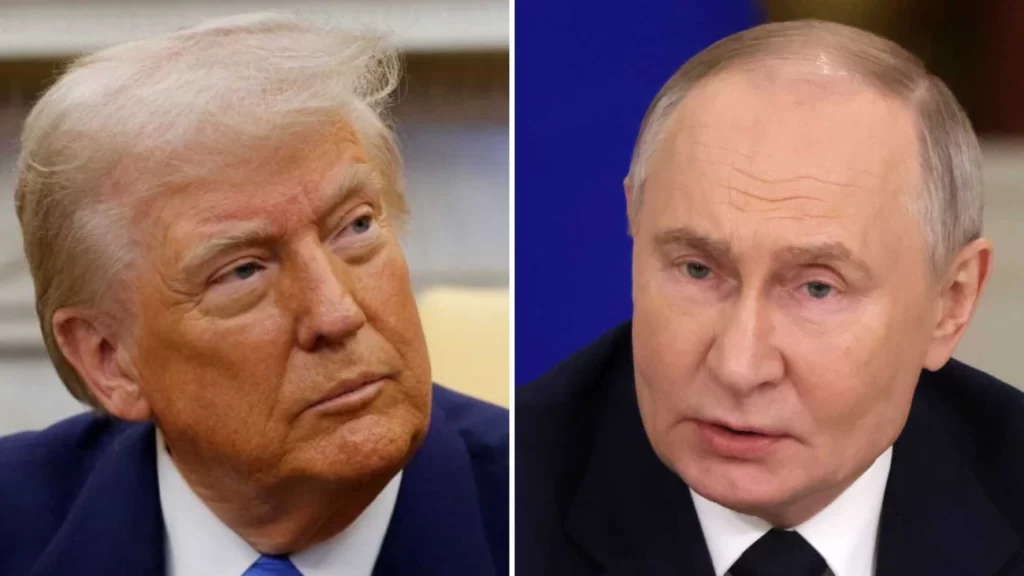
“Nothing’s going to happen until Putin and I get together, OK?” — Donald Trump, President of the United States
After a two-hour phone call with Russian President Vladimir Putin on Monday, President Donald Trump announced what he characterized as a breakthrough in peace efforts for Ukraine. This marked their third officially announced call since January.
Trump announces ‘immediate negotiations’
Trump was quick to take to his Truth Social platform, declaring: “Russia and Ukraine will immediately start negotiations toward a Ceasefire and, more importantly, an END to the War”. He later told reporters he believed Putin was “serious about wanting peace”.
The American president seemed optimistic about the process. He told journalists the call went “very well” and was “excellent”. All the same, he recognized potential challenges ahead and noted there were “big egos involved” in the negotiations.
Putin offers vague support for future talks
Putin’s response stood in stark contrast to Trump’s definitive statements and remained notably noncommittal. The Russian leader stated near Sochi: “We have agreed with the president of the United States that Russia will propose and is ready to work with the Ukrainian side on a memorandum on a possible future peace accord”.
The Russian leader offered a framework for discussions instead of concrete commitments. He emphasized: “The main thing for us is to eliminate the root causes of this crisis” – language he previously used when demanding Ukraine adopt a more pro-Russian position.
No agreement on 30-day ceasefire
Ukrainian President Volodymyr Zelensky had accepted an unconditional 30-day ceasefire at Trump’s urging, but Putin rejected this proposal. Kremlin spokesman Dmitry Peskov clarified on Tuesday: “There are no deadlines, and there cannot be any. It is clear that everyone wants to do this as quickly as possible, but of course, the devil is in the details”.
Trump ended up acknowledging this reality in a Fox News interview, admitting the 30-day ceasefire “would have been tough”. His focus has now moved toward more limited agreements on energy infrastructure and Black Sea maritime operations as potential stepping stones.
Ukraine and Allies React to Trump’s Optimism
Ukrainian President Volodymyr Zelensky gave a measured response to Trump’s ceasefire claims Tuesday. He emphasized that Ukraine needs American support whatever the diplomatic initiatives might be. This was Ukraine’s first official response to the Putin-Trump discussions that dominated international headlines.
Zelensky urges continued U.S. involvement
Zelensky spoke to the Ukrainian parliament and acknowledged Trump’s efforts. He made it clear that Ukraine must be the main negotiator for any real peace process. “We appreciate diplomatic efforts, yet Ukraine must be at the negotiating table for any meaningful resolution,” Zelensky said in direct response to the Trump-Putin call.
Zelensky’s diplomatic team stepped up their communication with Washington. “Our sovereignty is non-negotiable,” Foreign Minister Dmytro Kuleba said during meetings with U.S. officials. “We need American involvement to achieve lasting peace.”
European leaders express skepticism
European reaction to Trump’s announcement has been mostly skeptical. French President Emmanuel Macron questioned if Trump’s timeline would work during a Paris press conference. “Lasting peace needs us to address fundamental security concerns, not just announce negotiations,” Macron said.
German Chancellor Olaf Scholz shared similar doubts about Russia’s intentions. “Moscow’s previous promises ended up going nowhere,” he said during his appearance with the NATO Secretary General.
British Foreign Secretary James Cleverly didn’t mince words: “Peace announcements without concrete Russian withdrawal commitments raise serious concerns about intentions.”
Concerns over U.S. military aid withdrawal
The diplomatic language masks a deeper worry about possible changes in U.S. military support. Congressional leaders worry that ceasefire talks might become an excuse to cut Ukraine’s military assistance.
Senator Bob Menendez, chair of the Foreign Relations Committee, spoke up: “Premature aid reductions would severely undermine Ukraine’s negotiating position.” His words echo the bipartisan view that military support is vital for meaningful diplomacy.
Defense analysts point to Russia’s continued military buildup along the eastern front. They see this as a sign that Moscow wants advantage rather than peace. “Putin’s military actions contradict diplomatic signals,” said former NATO Supreme Allied Commander James Stavridis.
Ukrainian officials and Western allies prepare for a long conflict while they carefully keep diplomatic channels open.
Ceasefire Talks Shift Focus to Energy and Maritime Zones
U.S.-brokered peace talks have led to some concrete progress. The discussions produced limited agreements about energy infrastructure and maritime zones.
Partial ceasefire on infrastructure targets
The first real breakthrough came with a moratorium on attacks against energy facilities. The partial ceasefire covers oil refineries, pipelines, power plants including nuclear stations, and electrical distribution systems. This agreement came after the Trump-Putin call on March 18.
The implementation details remain unclear. The Kremlin says the agreement started March 18, while Ukraine states it began March 25. Both sides point fingers at each other over violations. Ukraine says Russia has struck energy facilities in Kherson and Mykolaiv regions more than 30 times since the agreement.
“This is not a battlefield,” Zelensky told reporters in Paris after an energy facility in Kherson was reportedly damaged. “Civilians lost energy. I believe that there should be a reaction from the United States”.
Black Sea maritime negotiations begin
Along with energy talks, negotiators have reached an agreement on “safe navigation” in the Black Sea. This deal tackles a crucial issue affecting global food security. The White House says both sides have agreed to “ensure safe navigation, eliminate the use of force, and prevent the use of commercial vessels for military purposes”.
This maritime deal looks similar to the Black Sea Grain Initiative that Turkey and the UN brokered in 2022, which ended in 2023. Russia wants certain conditions met first. They want sanctions lifted from their Agricultural Bank and reconnection to the SWIFT payment system before they fully implement the agreement.
Previous ceasefire attempts under Biden revisited
Earlier attempts at broader ceasefires during Biden’s administration didn’t work out. Ukraine agreed to a full 30-day ceasefire during U.S.-mediated talks in Jeddah on March 11. Russia turned it down unless Ukraine accepted limits on its military capabilities and stopped receiving foreign military aid.
Trump’s current approach is different because it focuses on specific areas instead of trying to reach complete agreements. Russia hasn’t changed its position – they still want Western military help to Ukraine stopped before considering broader peace talks.
Conclusion
Diplomatic Rhetoric Versus Battlefield Reality
Trump’s optimistic peace declarations stand in stark contrast to Putin’s dismissive responses, showing the complex reality of the Ukraine conflict. Their March phone call promised “immediate negotiations,” but the reality on the ground tells a different story. Russian forces continue their military operations, and Ukrainian forces report this as the war’s largest aerial assault yet.
Putin’s public mockery of Trump’s “24-hour” peace plan shows the huge gap between American campaign promises and real-world politics. European allies don’t buy it either – they’ve seen Russian promises go nowhere before. Leaders across Europe, including France’s Macron, Germany’s Scholz, and British officials, have voiced their doubts about Russia’s real intentions.
We’ve seen some small steps forward through specific deals on energy infrastructure and Black Sea maritime zones. These limited arrangements face tough challenges as both sides point fingers at each other over violations. Past attempts at broader ceasefires failed for the same reasons.
Ukraine maintains its clear position through all these diplomatic moves. They welcome peace efforts but won’t budge on their sovereignty and their need for American support. Zelensky makes it clear – Ukraine must be at the table as a main negotiator, not just a topic for other powers to discuss.
The basic conflict remains unchanged. Russia wants complete control of invaded territories and Ukraine’s demilitarization. Ukraine fights to take back all its land and secure NATO protection. These core positions make any talk of quick peace seem far-fetched. The conflict keeps moving along its dangerous path, and optimistic diplomatic announcements or timeline promises won’t change that.
